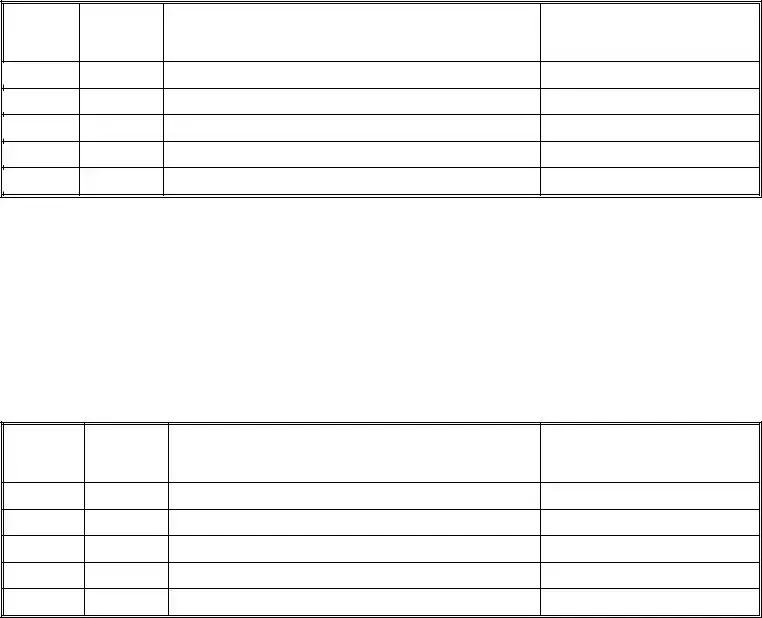The Form D, often used in connection with offerings exempt from registration under Regulation D of the Securities Act of 1933, shares similarities with the NY Form M-11 in purpose and structure. Both forms play a crucial role in regulatory filings for securities offerings, offering a streamlined process for issuers to provide essential information about their securities offerings to regulatory bodies. Like the NY Form M-11, Form D requires issuers to disclose basic information about the company, the offered securities, the size of the offering, and how the proceeds will be used, ensuring that pertinent details are accessible for regulatory overview and investor protection.
Another document that resembles the NY Form M-11 is the SEC Form S-1, which is a registration statement for new securities to be sold to the public. Both forms require detailed information about the issuer, including business operations, financial condition, and management. However, while Form M-11 is tailored for specific types of offerings within New York State, Form S-1 is used universally across the United States for initial public offerings (IPOs) and is significantly more comprehensive, covering a broader range of disclosure requirements set by the SEC to protect investors.
The Uniform Application for Investment Adviser Registration (Form ADV) also has parallels with the NY Form M-11, especially in its purpose of enhancing transparency and facilitating regulatory oversight. Form ADV is required for investment advisers to register with both the Securities and Exchange Commission (SEC) and state securities authorities. Both the Form ADV and Form M-11 collect detailed information about the registrants' business practices, affiliations, and any disciplinary events, aiming to safeguard the interests of the investing public by providing accessible and relevant information about the entities managing or offering investment opportunities.
The Uniform Securities Act (USA) Form U-2, also known as the Consent to Service of Process, shares a fundamental similarity with the NY Form M-11 regarding interstate and intrastate securities regulation compliance. While the Form M-11 is specific to securities offerings in New York, requiring issuers to disclose key information, the Form U-2 is used by issuers to appoint a service agent in a state, consenting to the jurisdiction of the state’s courts. Both forms are integral components of the regulatory framework, ensuring that issuers operate within the legal parameters set by state laws.
The NASAA (North American Securities Administrators Association) Electronic Filing Depository's (EFD) system form, used for the submission of Form D filings for Regulation D offerings, bears resemblance to the NY Form M-11 in its objective to streamline the filing process for securities exemptions. While the EFD system allows for electronic filing of exemption notices across multiple states, the NY Form M-11 specifically targets entities offering securities in New York, optimizing transparency and efficiency in the regulatory filing process. Both platforms serve to enhance the accessibility and management of exemption filings, though they cater to different jurisdictions.
The NY Form M-3, intended for amendments to the initial M-11 filing, is closely related to the NY Form M-11 in its application and purpose. Just as the Form M-11 is used for the initial disclosure of an offering in New York, the Form M-3 allows issuers to update previously submitted information, ensuring that all disclosures remain accurate and current. This mechanism for amendments is crucial for maintaining the integrity of the information on which investors and regulators rely, facilitating ongoing compliance with the regulatory requirements.
Form S-3, a simplified securities registration form used by already public companies under the SEC regulations, shares a conceptual similarity with the NY Form M-11. Both forms aim to reduce the regulatory burden on issuers while ensuring that necessary information is provided to potential investors and regulatory bodies. Form S-3, however, is applicable for issuers meeting certain reporting requirements, offering a streamlined path for registering securities offerings, paralleling the aim of Form M-11 to simplify the filing process within the specific context of New York State offerings.
The California Department of Business Oversight’s Form DBO-260.211, used for securities offerings in California, is analogous to the NY Form M-11 in its state-specific focus on securities regulation. Similar to New York’s M-11 form, California’s filing requirements are designed to protect investors by mandating disclosures that include details about the offering, the company’s management, and financial condition. While each state has its own regulatory framework and forms, the underlying principle of both documents is to foster transparency and investor protection within the respective state’s jurisdiction.


 other (specify)_____________________ organized under the laws of ____________________ on _______________________.
other (specify)_____________________ organized under the laws of ____________________ on _______________________.
 Yes
Yes 
 No. If no, please explain.
No. If no, please explain.
